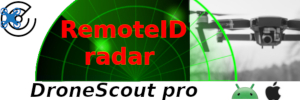I have NEVER said its illegal please read my comments carefully.
Navigating the complexities of flying a drone above forested areas requires an understanding of both general FAA regulations and location-specific rules set by land managers, such as the National Park Service (NPS) and the U.S. Forest Service (USFS).
- State Parks: Rules vary widely by state and locality. Some parks allow drones in designated areas, while others prohibit them entirely. Always check with the specific park you plan to visit.
- Bureau of Land Management (BLM) Lands: Drone use is allowed on many BLM lands, but like with National Forests, drones are prohibited in designated wilderness/primitive areas. Remember to research local regulations and wilderness area boundaries before flying
- Drones can disturb or harm wildlife and should be kept a safe distance from animals and sensitive areas.
- Flying near wildfires is illegal and dangerous as it can interfere with firefighting efforts.
- Noise from drones can negatively impact wildlife and the visitor experience.
- Crashes can cause environmental damage to trees and vegetation. Practicing safe flying techniques, like maintaining visual line of sight, helps prevent accidents.
- Before flying a drone above any forested area, always research and understand the specific regulations in place, including FAA rules and any local restrictions imposed by land management agencies. By following these guidelines and prioritizing safe and responsible drone operation,
Flying a Drone beyond VLOS in these areas is Dangerous! You can start a big fire!..One the drone pilot will be liable for.
Now retired, I was a career employee of the National Park Service and, in that capacity, was a federally commissioned law enforcement ranger for 27 years. I live within one mile of Colorado National Monument, where I served for years as Chief Ranger. I'm familiar with NPS regulations generally and 36CFR1.5 specifically, and I respect their intent. I've never encroached upon the monument's or other parklands' airspace, and I never will.
That said, the NPS's 36CFR1.5 does not expressly prohibit drone flights over parklands. It regulates only the launching, landing, and operating of them. It cannot regulate use of the airspace. That's solely within the FAA's purview. Though the FAA's 14USC107.45 acknowledges and honors the regulations of controlling land managing agencies, it doesn't expressly prohibit drone flights over those agencies' holdings either -- even over proposed and congressionally designated wilderness areas. What the NPS
can regulate and prohibit are nonconforming behaviors which involve the disturbance or harassment of wildlife, the damaging or destruction of natural and cultural resources, intrusions on visitor enjoyment, interference with agency functions (like wildlands fire suppression), and so on.
Civil, commercial, and military aircraft often fly over parklands and wilderness areas, and few people give them a second thought because they fly higher, assuming they're in compliance with FAA minimums. There are, of course, pilots who don't comply.
In the summer of 1970, while serving as a district ranger in the North Unit of Theodore Roosevelt NMP (now a NP) in North Dakota, I observed a small plane make repeated low altitude passes over a small herd of bison. The bison were alarmed enough to form a defensive circle around their calves. I noted the plane's tail number, contacted the FAA to ascertain the identity of the aircraft's owner/pilot, determined from flight records that he was indeed aloft at the time, cited him, and obtained a conviction in the US Magistrate's court in Bismarck.
When I was Chief Ranger at Badlands NM (now a national park), a guy with a helicopter set up shop outside the boundaries and offered rides. It gets hot in the badlands during the summer, and like many of his ilk, he sometimes shorted himself on fuel to save weight so he could accommodate an additional passenger. One day, he ran out of fuel, auto-rotated downward, and crashed in the monument, suffering only minor injuries and scaring the daylights out of his elderly passengers. When the FAA investigated, they drained the fuel tanks, fuel lines, even the sediment bulbs in his carburetors, and were able to find a total of about one quart of gas.
Unlike other aircraft, drones sometimes get a bad rap because our flights are restricted to lower altitudes AGL and are thus more likely to be perceived as intrusive or even threatening. In many respects, perceptions simply boil down to a matter of thresholds.










